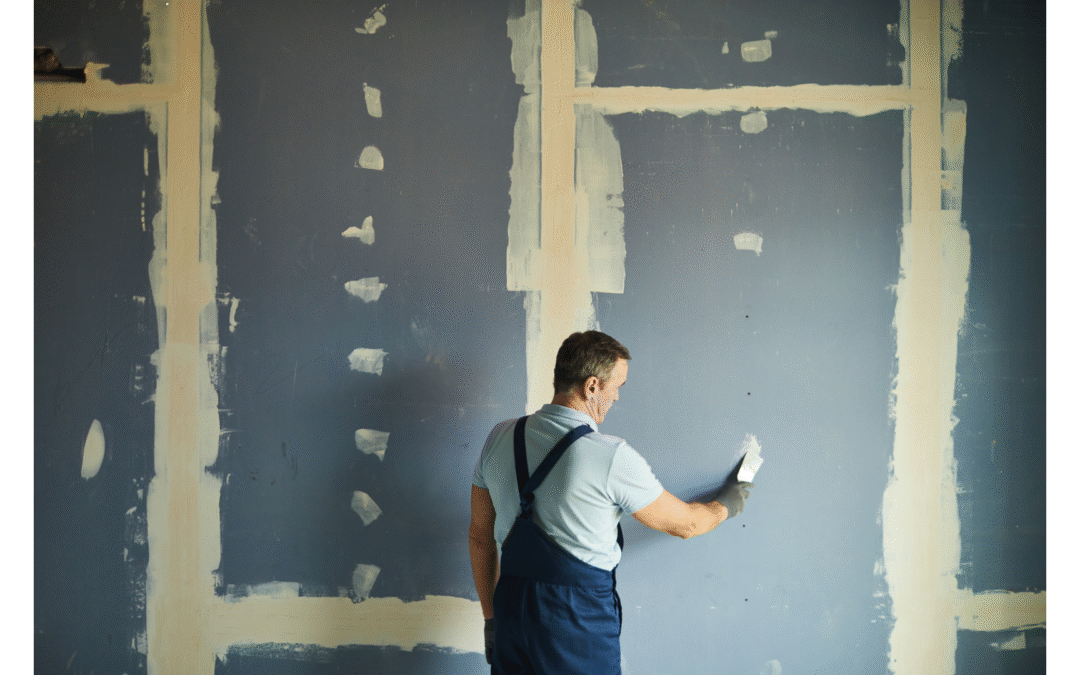Quick brief: Ice dams and freeze-thaw leaks stain ceilings, soak insulation, and creep behind paint. This guide shows how to diagnose the source, when to open and dry, the right repair sequence, and how to prevent a repeat next winter.
What ice dams do to ceilings and walls
Ice forms along cold roof edges while warmer attic air melts snow above. Water backs up under shingles and finds nail holes and seams, then shows up as brown stains, peeling tape, and soft drywall inside.
Diagnose the source before patching
Confirm the leak path and fix the cause first. Common culprits are warm air escaping into the attic, weak attic ventilation, missing baffles at eaves, or roof details at valleys and chimneys. A contractor may use a moisture meter and thermal imaging to map wet areas, and blower door findings can reveal air leaks that feed ice dams. If shingles, flashing, or underlayment are compromised, coordinate repairs with your roofer before closing the drywall.
Red flags you can see inside
- Expanding brown or yellow stains
- Sagging joints or popped screws
- Musty smell or visible mold on paper facing
- Cold stripes on ceilings in a thermal image
If the drywall feels soft or a meter shows elevated readings compared with nearby “dry” areas, plan to open the cavity.
When to open up and dry
Open the ceiling or wall when insulation is wet, the board is swollen, or staining keeps spreading. Cut a clean line 12–24 inches above the highest water mark, remove wet insulation, and set up airflow with fans and dehumidifiers. Dry until meter readings are back to baseline compared with unaffected areas.
Tip: Keep cut-outs square or rectangular to speed up Drywall Repair and reduce seam count.
Drying timelines in Idaho winter
Small, localized wet spots can dry in 24–48 hours with airflow and dehumidification. Larger areas with soaked insulation may take several days. Don’t close the cavity until wood and remaining drywall read dry and temperatures are stable.
The repair sequence that lasts
- Roof/attic fixes first: Air-seal at can lights, bath fans, and attic hatches. Add baffles for intake and balance exhaust.
- Replace insulation: Use dry, correct-R material and reinstall baffles at eaves.
- Board work: Patch or re-sheet as needed. For flat, invisible results, plan your finishing level using Drywall Finishing Levels.
- Tape and finish: Book Taping & Finishing if you want a fast, uniform finish.
- Prime to block stains: Use a true stain-blocking primer before topcoat so water marks don’t telegraph.
- Paint and blend: Full-ceiling paint often blends best on textured ceilings; if texture was disturbed, see Ceiling Repair and Texture Matching.
Painting and stain control
Water stains will bleed through standard primer. Use a shellac or alkyd stain-blocking primer, then finish with quality acrylic paint. In utility areas or where past moisture lingered, consider materials from Mold Resistant Drywall 101.
Prevent the next ice dam
- Air-seal ceiling penetrations and chases
- Improve attic ventilation with clear intake and balanced exhaust
- Add insulation to recommended R-values
- Keep bath and kitchen fans vented outdoors
- Ask your roofer about membrane at eaves and valleys; heat cables are a last resort
When to call a pro
Call if you see widespread sagging, visible mold, repeating stains after “repairs,” or if thermal imaging shows a large wet area. We handle leak mapping, drying strategy, drywall repair, finishing, and paint in one plan.
Call to action
Book an Ice-Dam Drywall Assessment
We inspect your attic and interior surfaces, map moisture, plan drying and repairs, and give you a written estimate and timeline.
Service area: Boise, Meridian, Nampa, Eagle, Kuna
Need texture blending after the patch? Start here: Ceiling Repair and Texture Matching
Contact: Request an estimate

